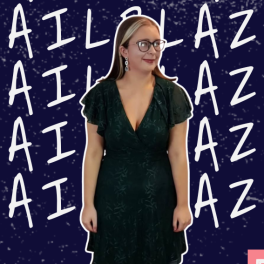
I feel like there are still many misconceptions surrounding creative writing as a mode of writing, one of which is that there are no rules. However, this couldn't be further from the truth. One of the most important things I've learned while studying creative writing is the importance of structure.
In prose writing, we typically follow a Three-Act Structure and in scriptwriting, it’s usually a Five-Act Structure. For this article, I will be focusing on the Three-Act Structure, delving into what each act entails in terms of the story.
Act One: Where It All Begins
In the first act, you will obviously be establishing your world and “protagonist” (your main character). From the very beginning you should make it clear what your protagonist’s “want” and “need” is.
To briefly explain, the protagonist’s want is what they set out to do, it’s their goal, but ultimately it isn’t what they need. It usually doesn’t actually make them happy. You can think of the need as the true desire, or who the character truly is as a person and this is something they have to learn about themselves.
This makes the protagonist very important for the plot because without them there would be no plot! Their story is centred around them realising who they really are. Every decision they make will shape the story. I could write a whole article about this itself but to bring it back to structure—
Your story starts from what we call an “inciting incident”. It is an incident that happens which causes the protagonist to take action. This could be anything, for instance, they could receive an invitation to a ball and they have to decide whether they go or not. Naturally, the inciting incident will tell your readers what your character’s want is.
Since the character has to learn about their need, they will not know about it at this point. But it would be good to give subtle hints to your readers on what their need might be. You want to keep your audience hooked!
Act Two: Moment of Realisation
Act Two is usually the longest act and it includes what we call the “midpoint”. The midpoint is pivotal, as it’s where key developments happen. It’s where the protagonist becomes aware of their need.
The protagonist has been trying to work towards their goal, their want, but both the readers and the character will see that it’s not bringing them true happiness or satisfaction (as I have mentioned before). An event will then push the protagonist to look beyond their want and act on what they truly need. But this is usually a brief moment, as another event will happen to bring about a “crisis”.
The crisis causes the protagonist to revert back and deny their need. They become fearful of confronting it and instead seek comfort in their want, as the want doesn’t require them to face their deeper identity.
Furthermore, the crisis can be considered the bridge to the next act. As such, we can think of the midpoint as connecting the beginning to the ending, since by the ending the protagonist will become a different person to who they once were.
Act Three: Tying It All Up
The final act has the “climax and resolution”. In the climax, the protagonist changes the most; this is what everything has been leading up to. The protagonist lets go of their fear and not only accepts but fully embraces their need. The resolution therefore marks the end of their journey.
Act Three tends to be the shortest act because you are essentially tying up loose ends. The excitement of adventure dies down and the protagonist can finally be at peace — unless you’re planning for a sequel! Then that peace will certainly be short-lived.
Ultimately...
A story is about change, and that’s what this structure is based around.
It can be hard to think of these sorts of rules when writing, especially for the first draft when you’re just getting all of your ideas down. But when you’re redrafting, you can refine the details.
I know I still struggle with it, but that’s the nature of writing. You’re constantly learning and improving your craft. It’s a skill that keeps on giving. So, don’t beat yourself up over any mistakes and have fun with the process!
For more help on storytelling, here are some books you can check out:
- On Writing by Stephen King
- The Art of Fiction by David Lodge
- Into the Woods by John Yorke (especially good for scriptwriting but also useful for prose!)
Support Young Creators Like This One!
VoiceBox is a platform built to help young creators thrive. We believe that sharing thoughtful, high-quality content deserves pay even if your audience isn’t 100,000 strong.
But here's the thing: while you enjoy free content, our young contributors from all over the world are fairly compensated for their work. To keep this up, we need your help.
Will you join our community of supporters?
Your donation, no matter the size, makes a real difference. It allows us to:
- Compensate young creators for their work
- Maintain a safe, ad-free environment
- Continue providing high-quality, free content, including research reports and insights into youth issues
- Highlight youth voices and unique perspectives from cultures around the world
Your generosity fuels our mission! By supporting VoiceBox, you are directly supporting young people and showing that you value what they have to say.





